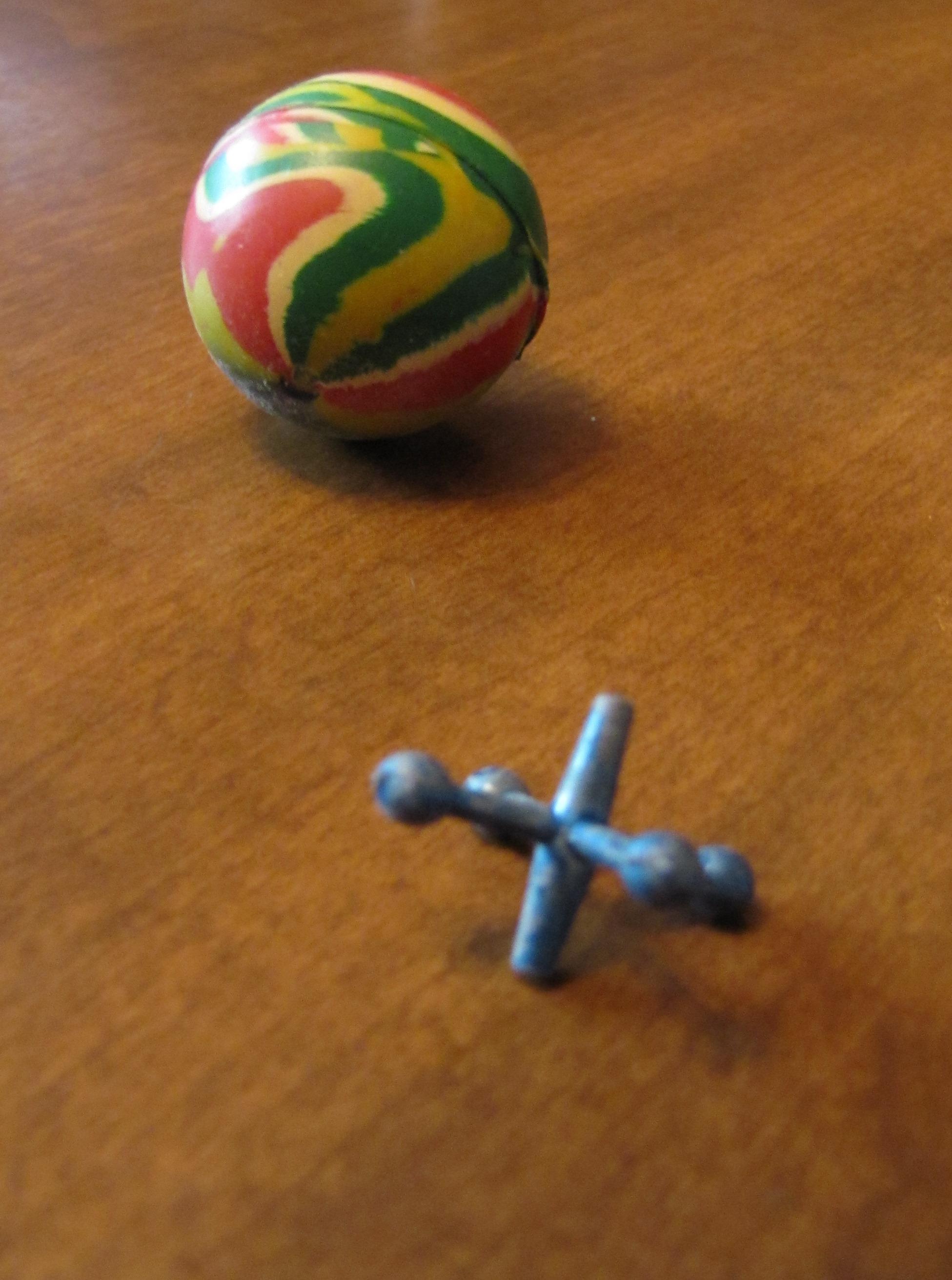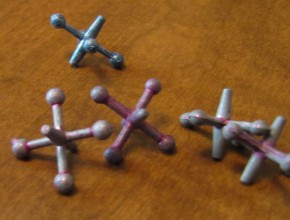Jacks, a Simple, Portable, Fun Piece of the Past

What’s worse than steeping on a Lego? Stepping on a Jack. What’s a Jack? Something that kept me entertained for hours as a kid. A jack is a 6-pronged object which typically has four rounded ends and two pointed. It is a simple game, one that can be played alone or with a partner, and portable enough to take anywhere.
Playing jacks is easy and can be done anywhere you have a flat surface. Necessary items include 10 jacks and a small ball (when I was a kid, we used bouncing balls known as Super Balls, which were frequently found in store dispensers). To play, you toss all the jacks onto the playing surface. Then you toss the ball up in the air, pick up one jack, then catch the ball after it has bounced, but before it bounces a second time, making sure this is all done with one hand and that you do not disturb any of the remaining jacks. (This round is known as onesies.) Repeat until you have picked them all up. Then you toss the jacks again, and repeat the process, instead picking up two jacks at a time, repeating up to ten. When you have leftover jacks (as you will on threesies), pick up the leftover jack at the end.
 If, on the initial throw, some jacks are touching, this is known as “kissies” and you can pick them up and drop them again to separate them (though you might want to keep them together, depending on what round you are on). When you miss, if for example, the ball bounces more than once or you move jacks not in play, or fail to pick up the correct number, your turn is over and the next person takes a turn. There are variations, such as allowing the ball to bounce once before catching it which can add variety and interest to the game when you have mastered the basics. Some popular variations on the game make it both more interesting and challenging. This can be as simple as varying the number of bounces to using only one hand.
If, on the initial throw, some jacks are touching, this is known as “kissies” and you can pick them up and drop them again to separate them (though you might want to keep them together, depending on what round you are on). When you miss, if for example, the ball bounces more than once or you move jacks not in play, or fail to pick up the correct number, your turn is over and the next person takes a turn. There are variations, such as allowing the ball to bounce once before catching it which can add variety and interest to the game when you have mastered the basics. Some popular variations on the game make it both more interesting and challenging. This can be as simple as varying the number of bounces to using only one hand.
 Historical Background
Historical Background
Although it was only inducted in to the National Toy Hall of Fame in 2000, the game has been around for a long time. It may derive from the ancient game of five stones, which may have originated during the Siege of Troy in 1184 B.C. Five stones had no ball, instead players would throw one of the five stones and then pick up the others. Some say that the game evolved from the Egyptian game knucklebones, which used bones from animal joints (often sheep), was played differently by children and adults. The children’s game was like jackstones, by tossing the pieces and attempting to catch them on the back of one’s hand. Adults however, used the knucklebones more like dice. 
Though playing jacks seems very basic, it can foster development in eye-hand coordination as well as concentration and memory skills. Math skills also come into play when strategizing one’s moves. The repetitive motions of the game can be soothing and can help one relax even while working to improve one’s game.
Jacks requires little space to play and takes up next to no room to take along with you, making it an ideal method of occupying time while traveling. It is inexpensive, making it possible to pick up more than one set for parallel play (or to replace the inevitable lost jack). Its simplicity makes it attractive to people of all ages and it can serve as a bridge between generations.
Comments